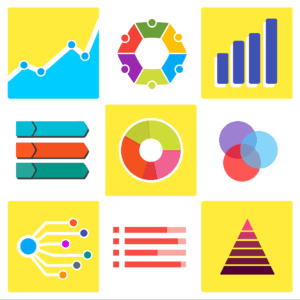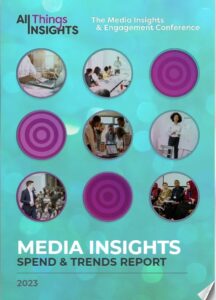Identifying The Many Roles AI Can Play
This type of business intelligence should propel goals such as increasing revenue, business growth and better outcomes. Certainly, human intelligence and intuition come into play when it comes to deriving better business insights. Yet, the advent of artificial intelligence is now giving a makeover to strategy insights and development. Insights professionals will need new data sources, creativity and new skills to take advantage of all that AI has to offer the strategy perspective.
In McKinsey & Company’s article, “How AI is transforming strategy development,” the consulting agency looks at how AI is now strengthening and accelerating the use of data and insights and how it impacts transformational strategies, from mobilization to execution.
The agency notes, “At its core, strategy entails deriving insights from facts and data, developing real options based on those insights, making hard-to-reverse choices, and executing initiatives that convert those choices into value. Data analytics has assisted in this work for several decades, but never before has technology been able to not only augment and partially automate inputs into strategy but also combine them into complex analyses. In time, it may even recommend viable strategies.”
AI, meanwhile, can assist in all phases of strategic planning and development, with a dose of key human judgement in the mix as well. McKinsey details how AI can take on several roles, often with human supervision and direction:
- Researcher. Strategists spend significant time gathering and enriching data from numerous sources. AI’s ability to summarize and create meaningful connections across all data sets can significantly enhance these efforts. While AI is more thorough and faster than humans, strategists still need to pose the right questions to generate the distinctive insights they seek.
- Interpreter. To turn data analytics into useful insights, strategists need to interpret how the findings can advance their goals. For example, a search for growth opportunities often entails looking into adjacencies. AI tools can facilitate this discovery process by converting data from a disparate set of inputs—such as annual reports, patents, customer reviews, and purchasing data—into “growth scans.” The resulting perspective can help strategists narrow down options, find precedents or benchmarks for actions under consideration, and uncover fresh ideas.
- Thought partner. AI can also serve as a brainstorming partner, speeding up idea generation and countering business leaders’ potential biases or blind spots. Gen AI in particular can help strategists avoid common pitfalls by assessing their plans against established frameworks.
- Simulator. Before committing to a strategic course, strategists consider the impact of multiple market scenarios based on macroeconomic conditions, potential competitor moves, and stakeholder reactions, among other factors. AI can make this scenario analysis much more rigorous through advanced modeling capabilities and tactical game and simulation applications.
- Communicator. A clear narrative of the strategic path and objective and their implications for the organization and its stakeholders is essential to mobilizing action. Gen AI’s ability to summarize concepts in different formats has been among the technology’s most popular applications. Strategists can use gen AI tools to make their narratives more compelling to different audiences with different levels of expertise and in different formats.
Ramping Up Business Strategies
This year, TMRE 2025 will host a panel, “Powering Business Strategy with Insights.” The panel will include Jordan Cusner, Senior Director, Consumer Insights & Research at Inspire Brands; Bridget Nelson, Head of Brand Performance and Audience Research at MassMutual; and Jason Goya Tiffer, Senior Vice President of Business Development & Account Management at High Beam Global.
Market researchers are in a powerful position to drive business strategy and deliver bottom-line impact through data-driven stories, human intuition and unearthing their consumers’ needs. However, forging findings with business goals can be a challenge. This panel will discuss pathways for tying insights to business strategy, tips for gaining stakeholder buy-in along the way, and ROI success stories from bringing the two together.
Gaining a Competitive Advantage
So where can the insights strategist begin? McKinsey recommends three near-term steps, including to get educated on AI’s capabilities. McKinsey notes, “The strategist of tomorrow needs to understand how AI works. How does a word prediction engine manipulate complex concepts and information? How are insights generated from the information included in models and prompts? Those who gain this expertise will be able to contribute to creating the tools their work requires, such as running complex simulations on how markets and competitive landscapes will evolve.”
McKinsey notes that the process of building AI capabilities should already be taking place. Start building today. “Strategy teams should familiarize themselves with the possibilities AI offers, from helping in their research and insight generation to identifying potential risks… From an organizational perspective, leaders need to help strategy teams gain access to expertise in data science, data engineering, and large language models. This can be done by embedding technology experts into strategy teams or by providing strategists access to them through centers of excellence,” advises McKinsey.
Lastly, develop your own proprietary insights ecosystem. McKinsey observes, “Even with state-of-the-art capabilities, AI models will be limited to interpreting existing data—they cannot generate new signals. For example, AI won’t replace the insights from ethnographic research or the direct input from customers. Indeed, such proprietary information will become even more critical to generating unique insights as external data grows more affordable and accessible to all market participants. To gain an edge, strategists will need to expand their exposure to different domains by connecting with innovators and stakeholders within and outside their organizations. Strategists’ core focus will increasingly become developing hypotheses, testing and learning from them, and maintaining the AI and data infrastructure that enable the conversion of insights into a competitive advantage.”
Video courtesy of MIT Corporate Relations
Contributor
-

Matthew Kramer is the Digital Editor for All Things Insights & All Things Innovation. He has over 20 years of experience working in publishing and media companies, on a variety of business-to-business publications, websites and trade shows.
View all posts





















































































































































































